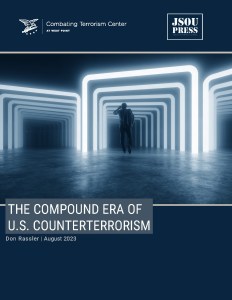
The past several years have been a period of transition for the U.S. counterterrorism enterprise. During this time, the United States has had to navigate, and adapt U.S. CT posture and approaches to, a shift in U.S. national security priorities; a complex, diverse, and ever-evolving threat landscape; and ongoing technological change that is transforming the worlds of extremism, terrorism, and counterterrorism.
In addition, the United States has simultaneously been working to define what the next chapter of U.S. counterterrorism should look like and how the U.S. CT community needs to evolve so it can anticipate, understand, and respond to the varied threats it will face in the years ahead.
To help drive change, the United States should frame the counterterrorism moment it finds itself as the compound era of U.S. CT. This new era is being shaped by three primary characteristics: multiple priorities; a broad range of threats, including mixed ones; and a more diverse CT landscape.
How well the United States responds to and adapts to the change and challenges that are occurring across these three areas will have an important bearing on the future effectiveness of U.S. counterterrorism.
This report outlines characteristics that define the compound era of U.S. CT and the utility associated with this framing. The body of the report then explores some of the key trends and factors that have been impacting and driving change across the extremism, terrorism, and CT landscapes. The report also discusses some of the implications of these trends and outlines 11 priorities that can help guide the U.S. counterterrorism community’s evolution during this new era.
 Skip to content
Skip to content

